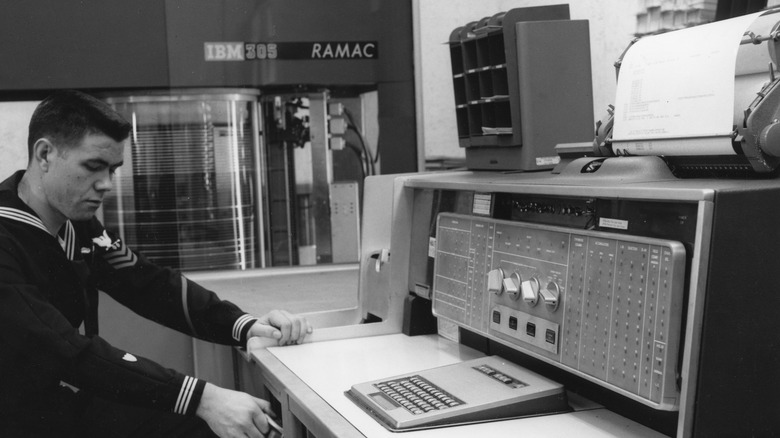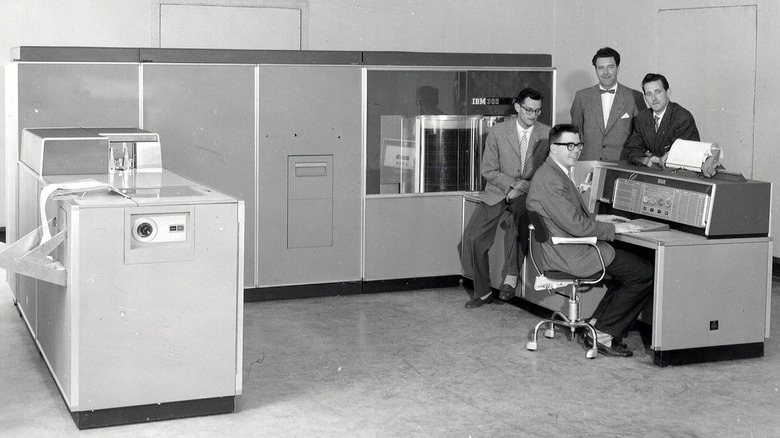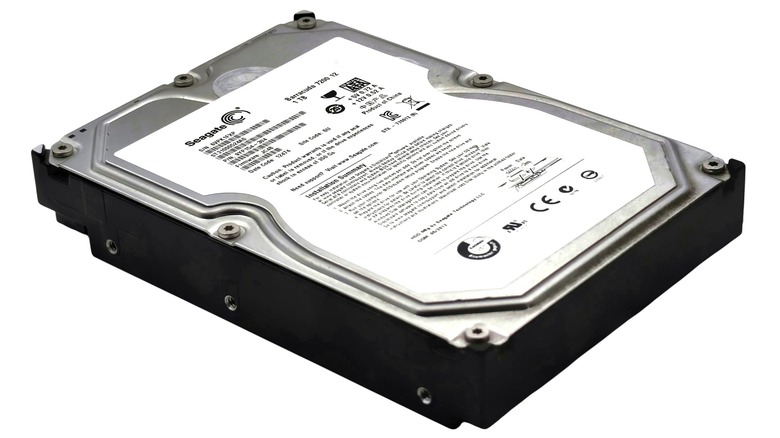IBM's First Hard Disk Drive Is 69 Years Old - Just How Big Was It?
It's difficult to believe how far technology has come since the mid-1950s. At a time when "I Love Lucy" and "The Honeymooners" were hit shows with nightly audiences, IBM was busy developing one of the most significant advances in digital storage. Among IBM's other contributions to computer history, the RAMAC (Random Access Method of Accounting and Control) 350 disk storage device could hold five million characters across 50 disks: Each platter had a diameter of 24 inches, which ran at speeds of 1,200 RPM.
While primitive by today's standards, this was a major leap in technology. The RAMAC not only acted as the precursor to the modern hard drive, but also ignited the spark that would lead to database development, and much more. Today, an 18TB hard disk drive that spins at 7200 RPM can fit in your hand, but digital storage technology in its infancy was anything but compact.
The RAMAC 350 not only couldn't rest in the palm of your hand, it was so immense, it took several men working together just to roll it around. Tipping the scales at around a ton (2,000 pounds), this monstrous box was described by IBM as similar in size to a couple refrigerator appliances pressed together.
How much did it cost and how many were made?
Interestingly, when the RAMAC 305 (the system that works with the RAMAC 350 disk drive) released, it wasn't sold, but instead leased. According to Forbes, a company would pay around $3,200 monthly to utilize the RAMAC. Today, factoring in inflation, leasing the RAMAC would cost over $38,000 every month. This, of course, could only be financially feasible for large corporations with the resources and deep pockets to afford it. IBM did not explicitly divulge the costs of developing the RAMAC, but judging by its monthly lease rate, it had to be a staggering figure at that time.
Reportedly, despite the steep operating costs of leasing a RAMAC system, greater than 1,000 of the 305 storage units were produced until 1961. While expensive, this revolutionary step in storage streamlined business operations and changed the landscape. And IBM is still innovating computers today, with a quantum computer estimated to be 20,000 times faster than anything before.
Prior to the RAMAC 350, information was stored on punch cards that needed to be hand-filed by office workers. The first HDD held what was essentially over 64,000 punch cards in storage. This eliminated the need for so many employees filing away punch cards, saving companies money.
Digital storage then and now
With advances in technology, hard disk drives have not only become much faster at accessing data since the RAMAC 350, but they provide vastly more storage space at a fraction of the size. Even more surprising is how much the costs of this tech have also fallen. The RAMAC 350 could manage a total of 3.75MB of space, not enough space for two average length mp3 song files.
You might be wondering why engineers at IBM didn't try for more. It was too expensive at the time, considering the amount of resources and physical space required. In fact, while a 1TB Western Digital internal HDD retails today for around $40, according to Computer World, 1TB of space is estimated to have cost $1 trillion in the 1950s.
Experts say that without the IBM RAMAC 350 hard disk drive, society wouldn't have e-commerce platforms like Amazon. While solid-state drives (SSDs) have taken off in recent years among consumers, major enterprises, cloud services, and now A.I. services are being backed by hard disk drives. SSDs are different from HDDs, as the latter features moving parts. However, HDDs offer a cost-effective solution for mass amounts of storage required for businesses/platforms.


